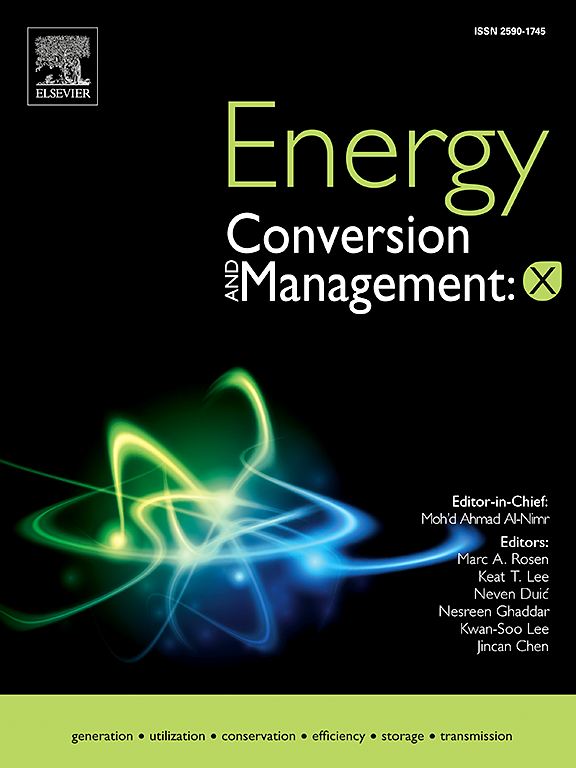Physicochemical properties of pyrolytic char and oil from mixed tyre using batch pyrolysis process
IF 7.1
Q1 ENERGY & FUELS
引用次数: 0
Abstract
End-of-life tyres (EOLT) has several adverse impacts to the environment, so it’s disposal to landfill is not wise. Rather, it can be converted to energy products through thermo-chemical conversion processes. One of the thermo-chemical conversion processes is called pyrolysis. A batch pyrolysis experiment was conducted for EOLT using a 20L pyrolysis reactor at 540 °C temperature with atmospheric pressure for 3 h to produce char, oil and syngas. Feedstock was mixed tyres, which is a mixture of light, medium and heavy tyre at 1:1:1 ratio. The focus of the study was to investigate the physicochemical properties of oil and char produced from pyrolysis. Thermogravimetric and FTIR analysis was performed to characterise oil. The study found that pyrolysis reactions started at 280 °C and completed at 515 °C with about 40 % char/residue. The properties of the mixed tyre pyrolytic oil (MixTPO), such as higher heating value (HHV), density, flash point, etc, were analysed and compared with petroleum fuel such as diesel and kerosene. Although MixTPO had a high calorific value of 42.00 MJ/kg, other properties such as viscosity, flash point, water content do not allow its direct use as an engine fuel. Physical properties (Surface area) and chemical properties (elemental analysis, ash content and composition) of the pyrolytic char were examined. It was found from the Mmcroanalytical tests that tyre pyrolytic char (TPC) contains 70 %–90 % pure carbon with some impurities like oxygen, zinc, and sulphur. It’s BET surface area is low (15.89 m2/kg) which makes it unsuitable to use as an absorbent, requiring further microstructural improvement. The findings signify that though waste tyre can be converted into various valuable energy products (oil, char and syngas) through pyrolysis which has high commercial value, liquid oil needs further treatment to use as an automobile fuel and char needs microstructural improvement to use as an absorbent. Further study is recommended.
求助全文
约1分钟内获得全文
求助全文
来源期刊

Energy Conversion and Management-X
Multiple-
CiteScore
8.80
自引率
3.20%
发文量
180
审稿时长
58 days
期刊介绍:
Energy Conversion and Management: X is the open access extension of the reputable journal Energy Conversion and Management, serving as a platform for interdisciplinary research on a wide array of critical energy subjects. The journal is dedicated to publishing original contributions and in-depth technical review articles that present groundbreaking research on topics spanning energy generation, utilization, conversion, storage, transmission, conservation, management, and sustainability.
The scope of Energy Conversion and Management: X encompasses various forms of energy, including mechanical, thermal, nuclear, chemical, electromagnetic, magnetic, and electric energy. It addresses all known energy resources, highlighting both conventional sources like fossil fuels and nuclear power, as well as renewable resources such as solar, biomass, hydro, wind, geothermal, and ocean energy.
 求助内容:
求助内容: 应助结果提醒方式:
应助结果提醒方式:


